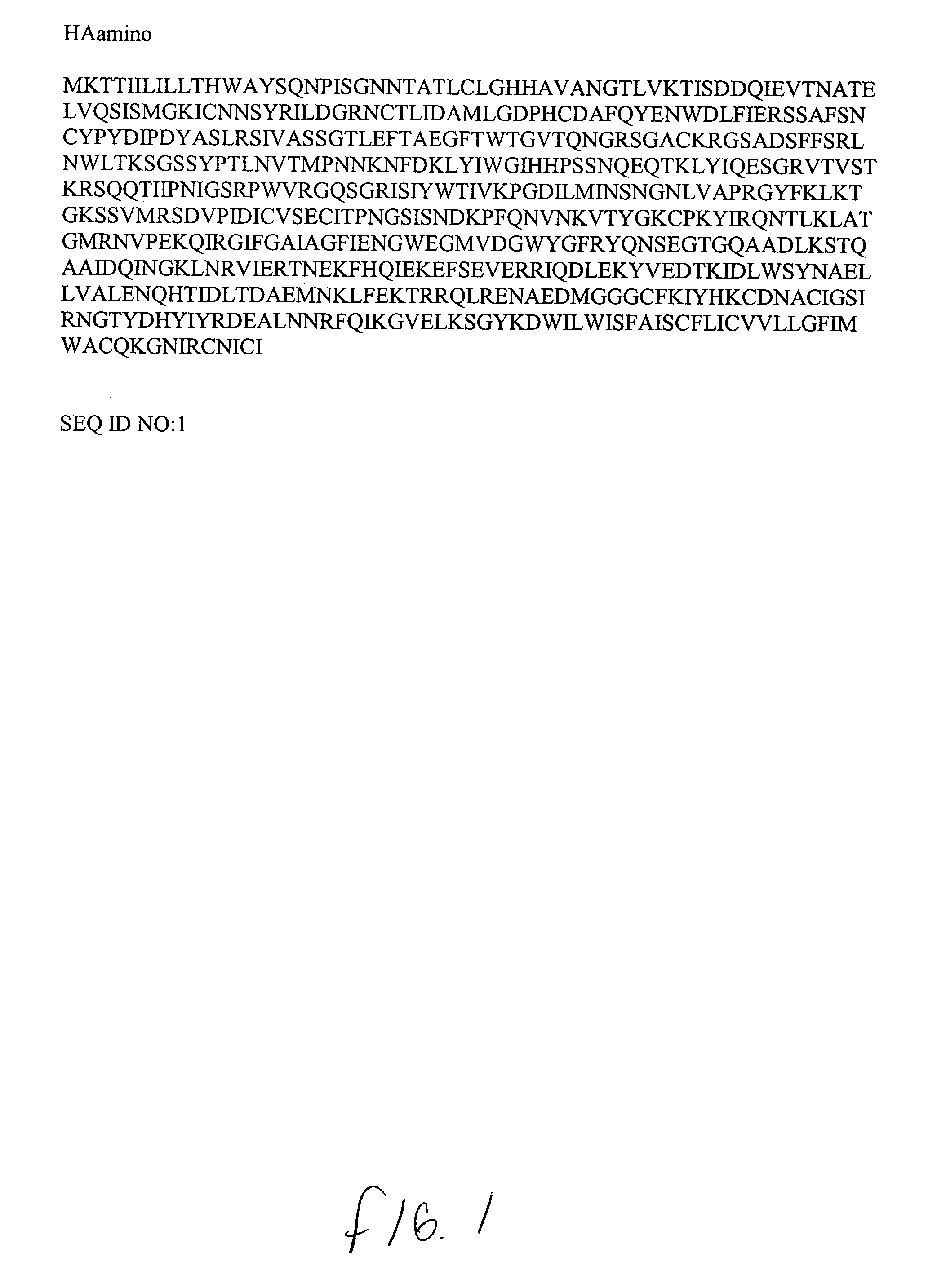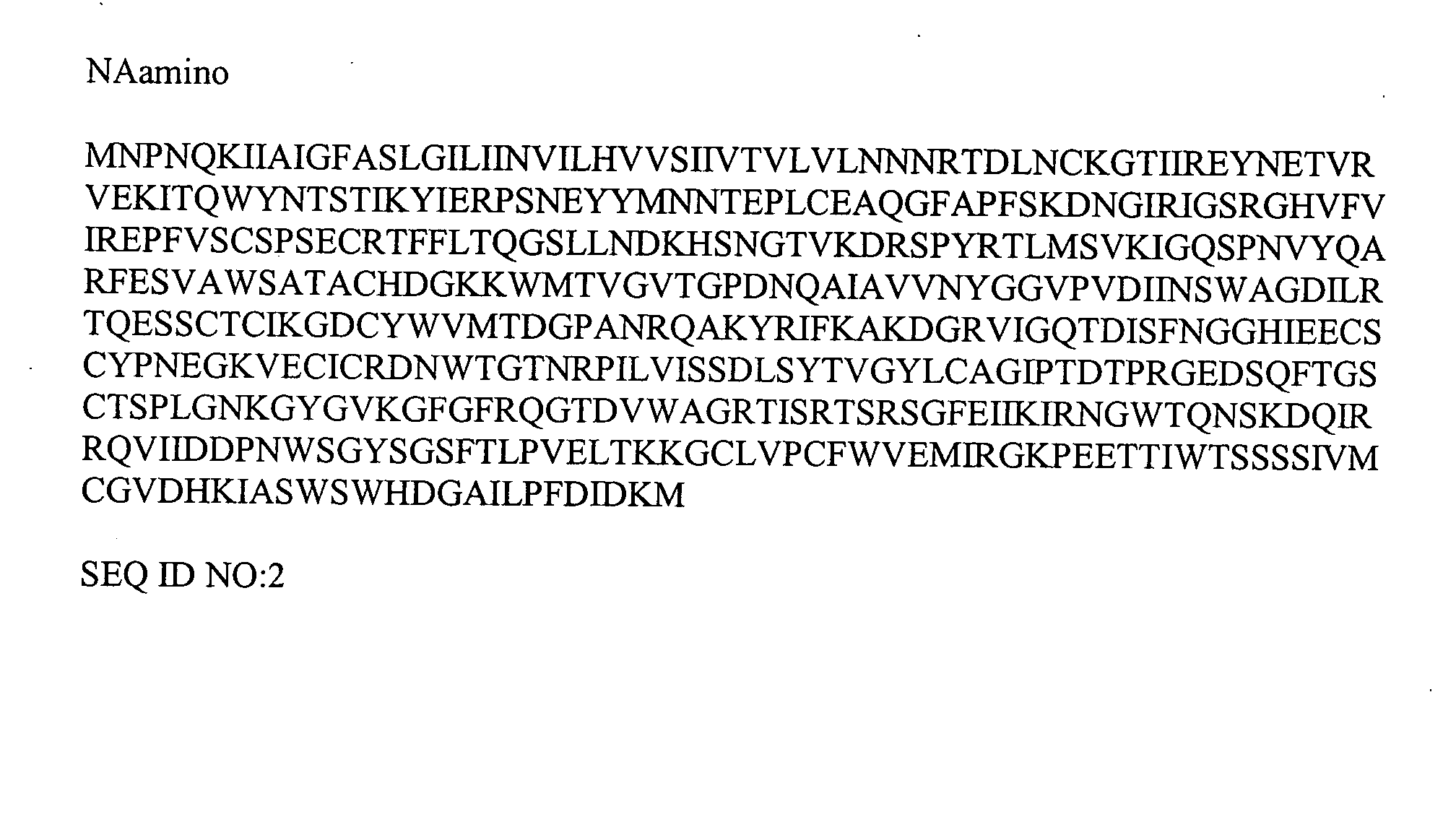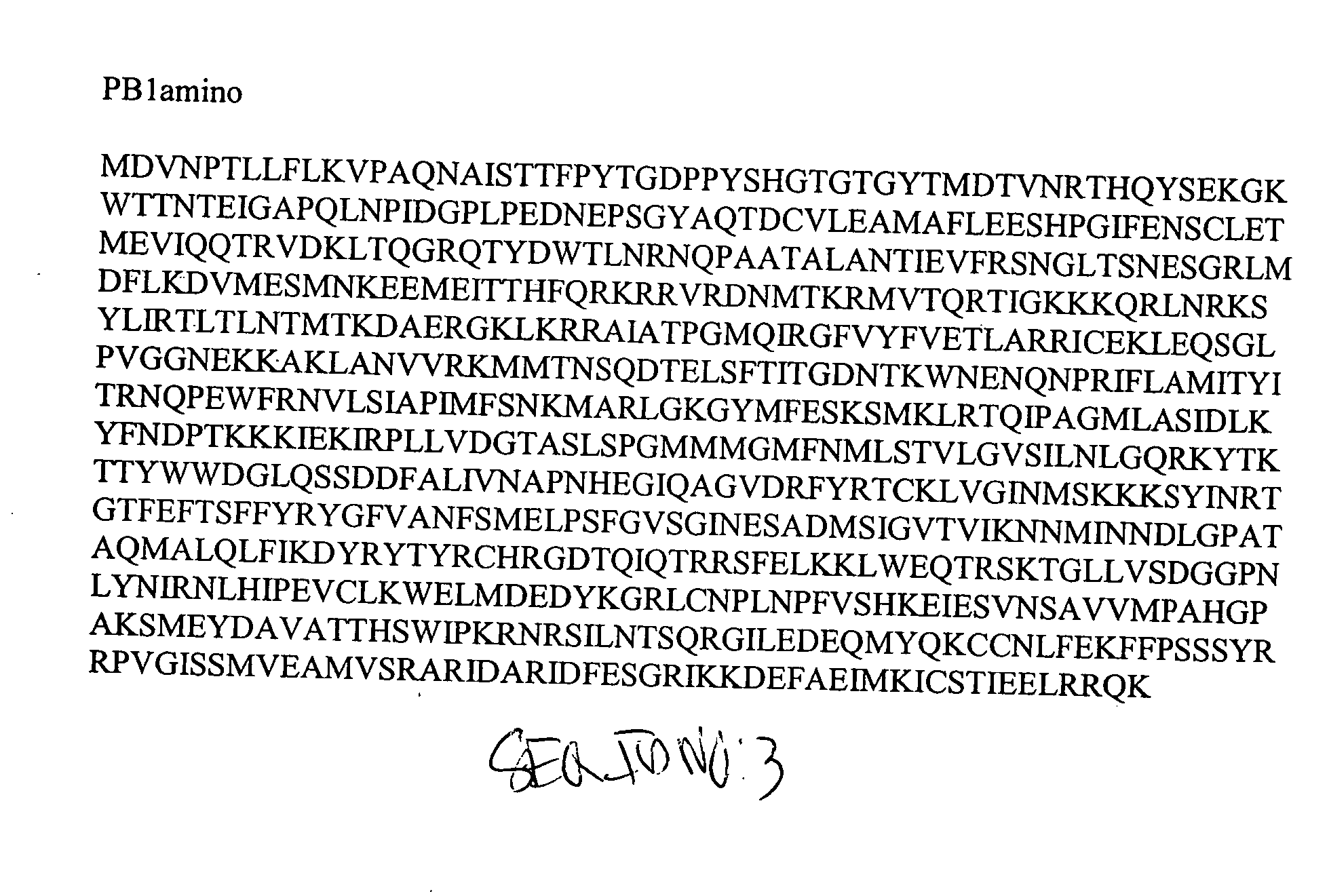H3 equine influenza A virus
a technology of equine influenza and equine influenza, applied in the field of equine influenza a virus, can solve the problems of substantial morbidity and economic loss, and achieve the effects of preventing or inhibiting infection, reducing morbidity and economic loss, and reducing morbidity
- Summary
- Abstract
- Description
- Claims
- Application Information
AI Technical Summary
Benefits of technology
Problems solved by technology
Method used
Image
Examples
example
[0075] An approximately 36-hour-old Morgan / Friesian colt was referred to the large animal hospital at the University of Wisconsin for an evaluation of altered mentation (mental status), first noticed shortly after birth. Parturition had been unobserved, but the foal had been found separated from the mare by a fence at a few hours of age. The foal was ambulatory and able to nurse when first discovered but showed progressive disorientation, apparent blindness, and aimless wandering during the following 36-hour period. A SNAP immunoglobulin G (IgG) assay (Idexx Laboratories, Westbrook, Me.) at 24 hours of age had shown an IgG concentration >800 mg / dL, and a CBC performed at that time was normal. The foal was treated twice with dimethyl sulfoxide 1 g / kg IV, diluted in 5% dextrose before referral.
[0076] At presentation, the colt wandered aimlessly, bumped into objects, and appeared blind with sluggish but intact pupillary light responses. When positioned under the mare, the foal nursed ...
PUM
| Property | Measurement | Unit |
|---|---|---|
| body temperature | aaaaa | aaaaa |
| concentration | aaaaa | aaaaa |
| concentration | aaaaa | aaaaa |
Abstract
Description
Claims
Application Information
 Login to View More
Login to View More - R&D
- Intellectual Property
- Life Sciences
- Materials
- Tech Scout
- Unparalleled Data Quality
- Higher Quality Content
- 60% Fewer Hallucinations
Browse by: Latest US Patents, China's latest patents, Technical Efficacy Thesaurus, Application Domain, Technology Topic, Popular Technical Reports.
© 2025 PatSnap. All rights reserved.Legal|Privacy policy|Modern Slavery Act Transparency Statement|Sitemap|About US| Contact US: help@patsnap.com



